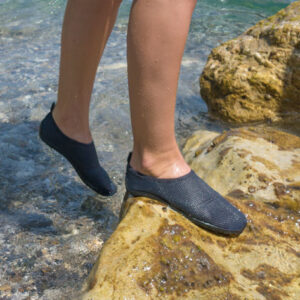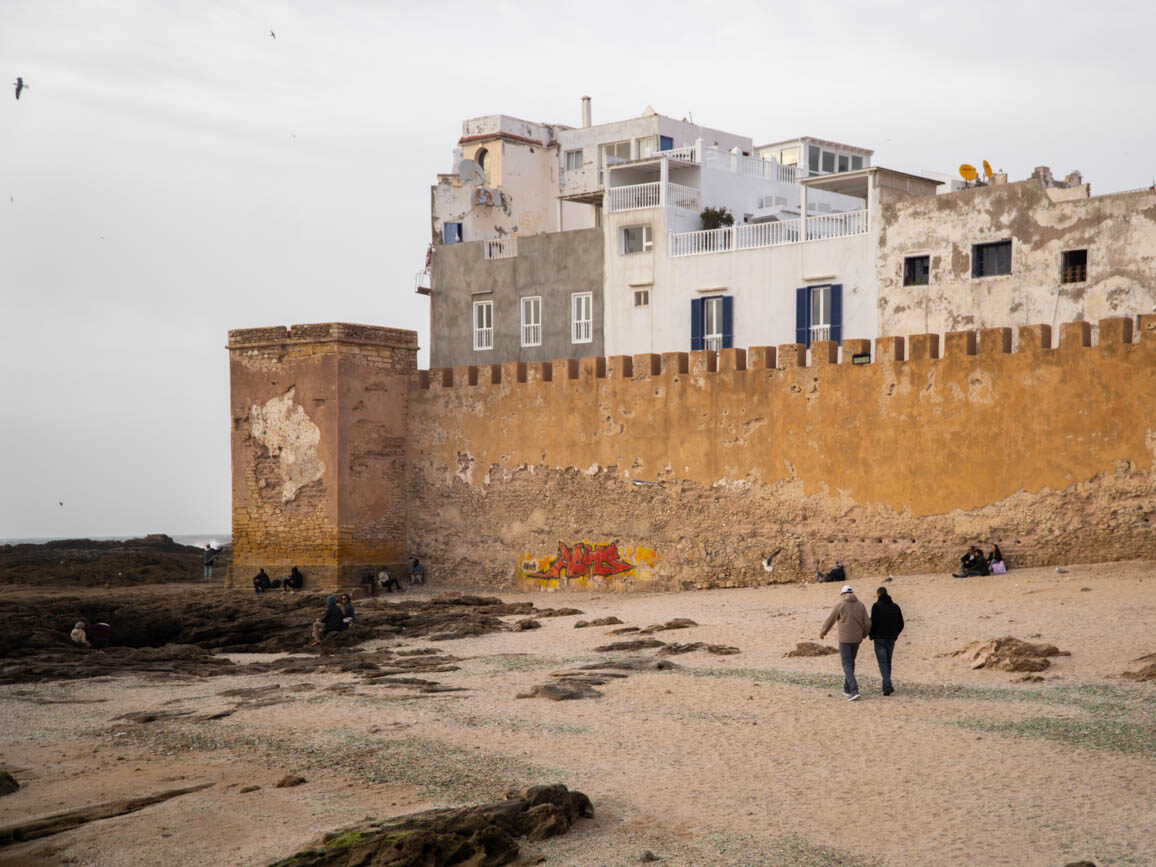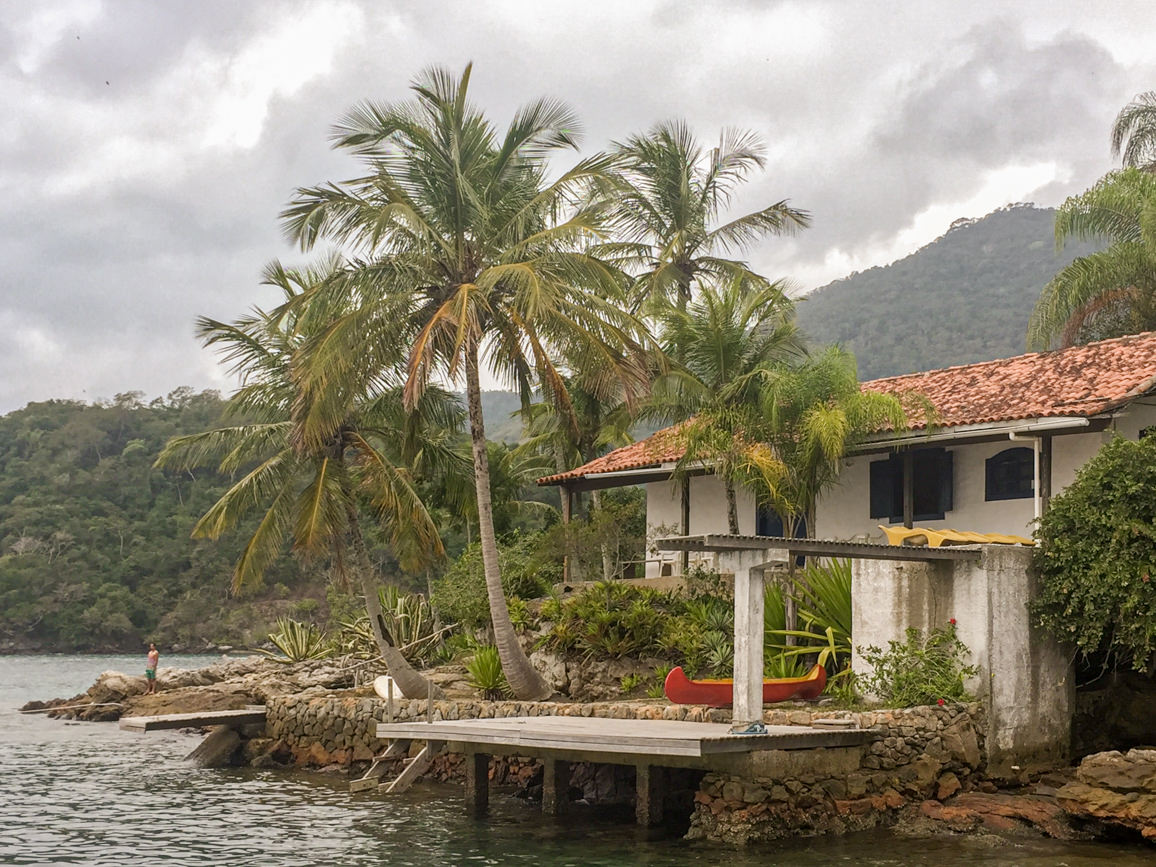
Angra dos Reis & Ilha Grande: the perfect tropical getaway from Rio de Janeiro
Brazil‘s Green Coast, also known as Costa Verde in Portuguese, extending south of Rio de Janeiro all the way to the village of Trindade, lives up to its name. The tropical vegetation covers the coastal mountains and the forests of the Itatiaia National Park, while beautiful islands emerge surrounded by the deep waters of the Atlantic Ocean. The port town of Angra dos Reis is the ideal starting point to explore Ilha Grande, the largest island in the area. In this travel guide, you’ll learn all you need to know about Angra dos Reis and Ilha Grande, how to get there from Rio and where to stay and eat. Are you ready to start discovering these Brazilian tropical destinations?
[I originally traveled to Angra dos Reis and Ilha Grande with some friends in August 2016 during the Summer Olympics that took place in Rio de Janeiro. This updated post reflects the latest information available.]
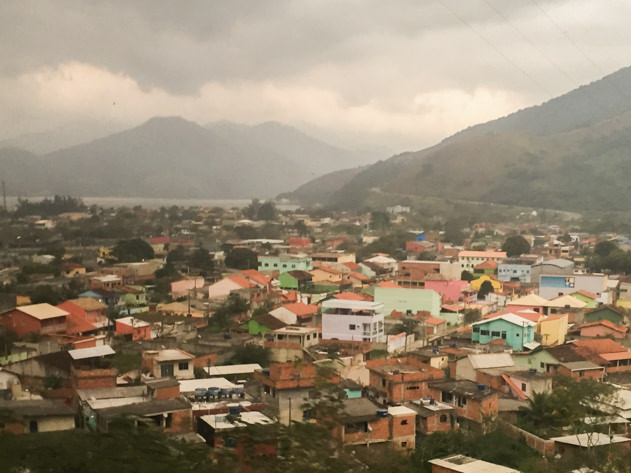
Angra dos Reis
Angra dos Reis, also referred to as Angra, is a Brazilian port town in southwest Rio de Janeiro state that lacks charm.
However, it’s a popular departure point to explore the nearby tropical islands of Ilha da Gipóia and Ilha Grande. There are actually 365 islands in this area, literally one for each day of the year! It is also considered one of the best diving spots in Brazil.
On that note, I believe it is key to feel comfortable when hitting the beach. Below are some of the sports products that I would recommend using. You can also check out my Decathlon affiliate profile for more inspiration.
Back in the day, Angra dos Reis was as attractive as the nearby city of Paraty (see more information on it below), but the expansion of the favelas has hidden the remains of its colonial past.
The top attractions in Angra dos Reis include a couple of religious buildings built between the 15th and 16th centuries (the church of Nossa Senhora da Imaculada Conceição and the monastery Convento do Carmo) and a colonial naval complex (Colégio Naval) located about three kilometers north of the city towards Praia do Bonfim. Last but not least, Praça Almirante Tamandaré and Mercado Redondo, where you can buy fresh fish and seafood, are among other highlights in Angra.
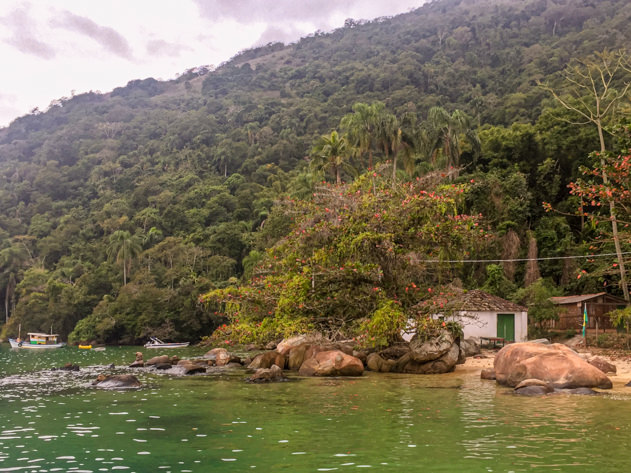
Ilha Grande
Literally meaning ‘big island’, Ilha Grande is the largest island on the Green Coast, located in southeastern Brazil.
This jungle island without roads offers very limited services, which is why it remains tucked away from development and mass tourism. However, the fine white sand beaches and hiking trails are wonderful. With rocky peaks covered by lush vegetation, the island serves as a refuge for the wealthy classes.
Here are the main activities you should do while you’re exploring Ilha Grande, Brazil:
- Abandoned prison
- Abraão
- Beaches
- Hiking
Let’s go through each top attraction in more detail.
Abandoned prison (Colonia Penal Cândido Mendes)
Back in the day, the island of Ilha Grande was a prominent pirate lair, later becoming a landing port for slaves bound for Rio de Janeiro. At the end of the 20th century, it was turned into a prison for political prisoners.
From Abraão, you will find a trail that leads to the ruins of the Cândido Mendes prison, which are still preserved by the vegetation.
The nearby Prison Museum (Ecomuseu Ilha Grande Museo do Cárcere) features exhibits to learn about the lives of the inmates through original objects ad documents.
On the northern side of the island, close to Praia do Galego in Abraão, you can also explore the ruins of a former quarantine hospital (Ruínas do Lazareto) that prevented the spread of epidemics to the Brazilian mainland.
Abraão
Vila do Abraão, or simply Abraão, is the island’s main village. This small port settlement with just a few streets features some restaurants, bars and the 19th-century church dedicated to St. Sebastian (São Sebastião).
Most Abraão’s agencies and hotels offer various trips around the island, many of them in beautiful wooden fishing boats. Another great way of island hopping is by renting jet boats, speedboats or schooners.
From Abraão, you can actually take a ferry or a rental fishing boat connecting you to Angra dos Reis. Once you’re there, you can easily reach Rio de Janeiro by bus.
Read this destination page for more inspiration about Brazil!
9 things to do in Rio de Janeiro: the ultimate travel guide & map
My experience during the Summer Olympic Games (Rio 2016)

Beaches in Ilha Grande
The Brazilian island of llha Grande is ringed by fine white sand beaches.
Departing with a steep slope from Abraão, you will find one path that crosses the forest to deserted beaches where there are only a few surfers and fishermen’s cabins.
Below are some of the most popular beaches (praias in Portuguese), bays and coves in Ilha Grande:
- Enseada das Palmas: one of the most popular excursions in Ilha Grande leads to Palmas Cove, located in the eastern part of the island.
- Lagoa Azul: sheltered, fish-filled waters in the island’s north. In this area you will find another church, built in 1843, worth visiting (Igreja da Freguesia de Santana).
- Praia da Baleia: known as whale beach.
- Praia de Lopes Mendes: located on the southeastern shore, this long, palm-lined beach is popular among surfers given its strong waves.
- Praia do Japariz: this is where we ate during our day trip from Rio.
- Saco do Céu: famous spot to dive or snorkel in the crystal-clear waters of a mangrove.
Hiking in Ilha Grande
Covered by the Atlantic forest, the island of Ilha Grande is crossed by winding trails. The marked paths often run through rocky and steep areas but offer wonderful views over the Atlantic Ocean.
Thanks to its mountains and waterfalls, it is considered an ecological sanctuary for its biodiversity.
Although a large part of the 193 square kilometers of the island are part of the Ilha Grande State Park (Parque Estadual da Ilha Grande) and hence protected, the virgin state of Ilha Grande is rather due to its long isolation.
The most demanding route is the one that ascends to Papagayo Peak (Pico do Papagaio) at 990 meters high.
Below you will find my favorite hiking products! You can also check out my Decathlon affiliate profile for more inspiration.
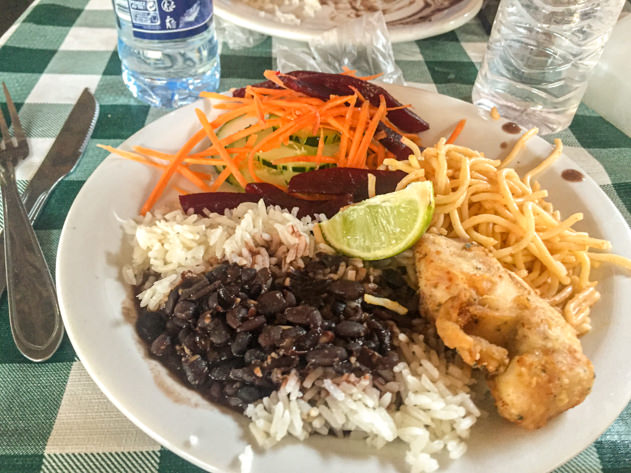
Where to eat in Angra dos Reis and Ilha Grande
You will find various restaurants and bars to eat when visiting Angra dos Reis and Ilha Grande, mainly offering fresh fish, seafood and tropical drinks made of fruits. Here’s a selection of places you could try:
- Samburá (Angra dos Reis): this restaurant has been up and running for over 30 years and is considered one of the best in town. It specializes in fish and seafood.
- Mistura Classica (Angra dos Reis): this Brazilian brewery that originated in the state of Rio de Janeiro sells its beers in the nautical hub known as Marina Verolme.
- Bonito Resto Bar (Ilha Grande): located right in Praia Abraãozinho in Ilha Grande, this beach bar offers tasty and delicate dishes made with fresh and local ingredients, such as seafood or signature cocktails.
- Las Sorrentinas (Ilha Grande): restaurant serving homemade Italian pasta and Argentinian dishes near the main beach in Abraão.
- Reis e Magos (Ilha Grande): this restaurant located in the famous diving spot of Saco do Céu offers refreshing caipirinhas and fresh seafood.
- Restaurante Dom Mario (Ilha Grande): it has a reputation for serving delicious local seafood.
- Sorveteria Ally (Ilha Grande): if you’re into yummy and nutritious açaí bowls, this is your place to go!
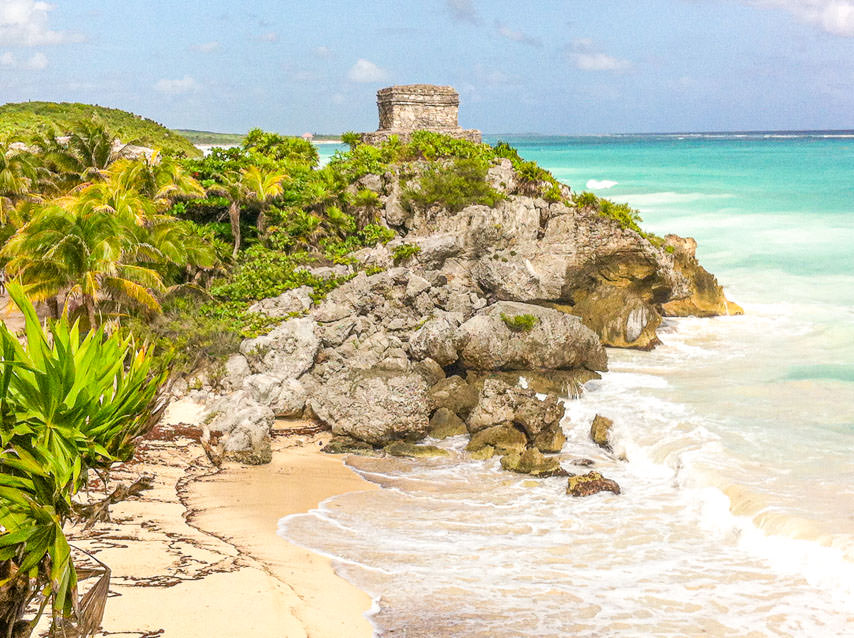
Discover more destinations in Latin America!
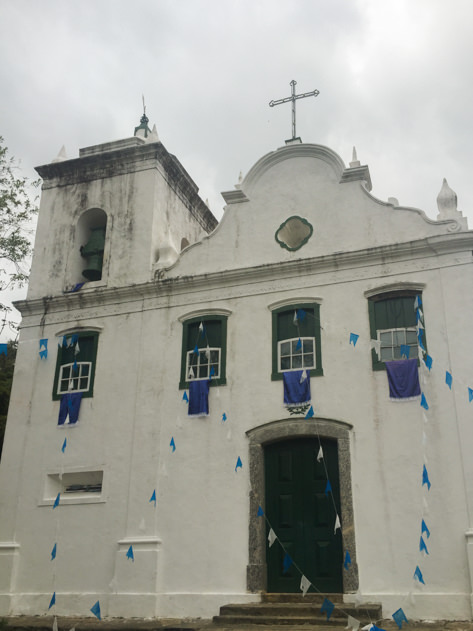
Where to stay in Angra dos Reis and Ilha Grande: best hotels
Looking for accommodation options in Angra dos Reis or Ilha Grande? You will find various hotels below:
Angra dos Reis hotels
The 4-star hotel Fasano Angra dos Reis is a wonderful choice if you’re staying in town. Featuring 60 spacious apartments overlooking the sea and the lush countryside, this hotel also includes a spa, a fitness center, two restaurants, tennis and sports courts as well as a number of shops within the premises.
Ilha Grande hotels
- Casa da Ilha Inn (Sagu Mini Resort): this pousada surrounded by tropical gardens and bay views offers nine balcony rooms, a restaurant and a jacuzzi.
- O Sitio: this charming hotel is located near Praia de Abrãaozinho and features rooms that are tastefully decorated. It organizes water sports and other activities.
- Pousada Ancoradouro: located by the sea in Canto da Praia do Abraão, this inn stands on the beach in a quiet area of town. Its eight apartments, which have minimalist decoration, are also well maintained and include basic facilities such as TV and a small refrigerator.
For further accommodation options in Ilha Grande or Angra dos Reis, feel free to check Airbnb or Booking.
Having said that, it is highly advisable to book early, especially during the peak summer months and long weekends.
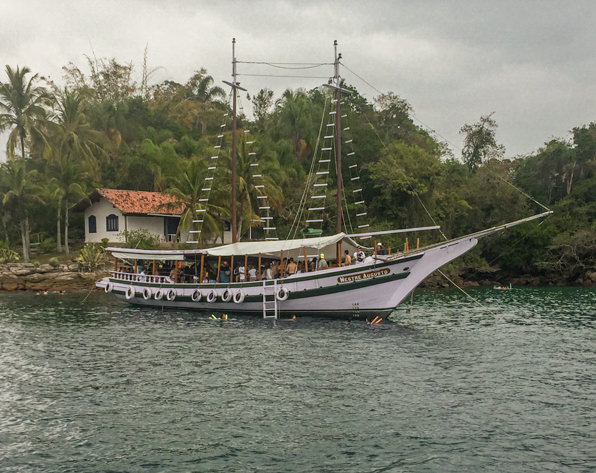
How to get to Ilha Grande and Angra dos Reis from Rio de Janeiro
Given their relatively ‘short’ distance to the Brazilian metropolis, these tropical destinations are an ideal day trip or extended getaway from Rio.
You can easily get to Angra dos Reis by car or bus, and from there take a boat or ferry to Ilha Grande.
Located around 180 km (111 miles) from Rio, it would take you nearly three hours to drive to Angra dos Reis on the interstate highway. The city of Rio de Janeiro also offers a good bus service connection to all coastal towns.
Once you’ve arrived to Angra, you can hop on a ferry heading to Ilha Grande on a daily basis, including weekends and holidays. The boat ride to Ilha Grande from Angra dos Reis is 80 minutes long and costs R$20.50. Bikes are allowed for free on board. Make sure to check the exact docking location and hours of operation of ferries connecting Angra dos Reis and Ilha Grande.
Actually, my friends and I booked a day trip from Rio de Janeiro to Angra dos Reis and Ilha Grande for 110 Reais (22$), including the bus drive with a tour guide and air conditioning, a boat tour with stops in four islands to dive, and lunch in Ilha Grande featuring tropical fruits. The truth is we weren’t lucky with the weather as it was mostly cloudy. This was a pity because we didn’t enjoy swimming in Lagoa Azul that much given that we were wet most of the day. Furthermore, we left from Copacabana in Rio, but we picked up more people along the way and got delayed after stopping in Muriqui for a while. Next time, it would be ideal to do this day trip with nicer weather and stay a few more days to further explore the whole area.
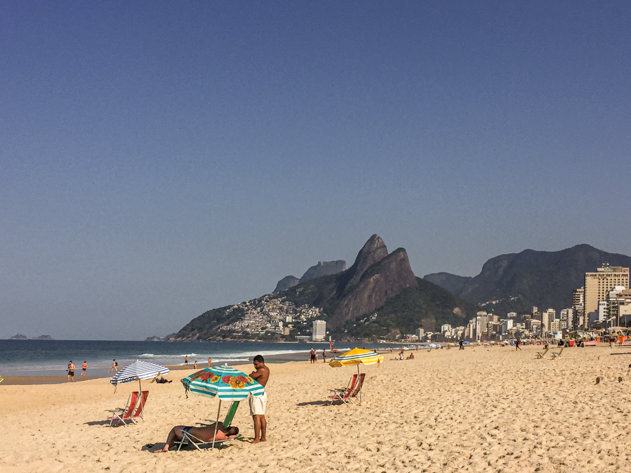
What to see and do beyond Angra dos Reis & Ilha Grande, Brazil
The state of Rio de Janeiro is one of the most beautiful regions of Brazil. On the one hand, its coastline is dotted with tourist resorts, beautiful colonial fishing towns and lined with white sand beaches. On the other hand, the mountainous inland is home to the former summer retreats of the Portuguese royal family. Many of the high slopes remain covered by the Atlantic Forest (Mata Atlântica) and protected by various national and state parks such as Itatiaia and Serra dos Órgãos.
Here are some destinations to visit outside of Angra and Ilha Grande:
- Búzios
- Niterói
- Paraty
- Petrópolis
- Rio de Janeiro
- Teresópolis
Let’s discover what to see and do in each of them.
Búzios
When French actress Brigitte Bardot first visited, this busy resort was a quiet fishing village on a peninsula lined with pristine beaches. Nowadays, the main street of Rua das Pedras as well as the surrounding cobblestone streets of this small town welcome elegant boutiques, upscale restaurants and charming pousadas (local accommodation typically run by families). Most visitors come to Búzios because of its fantastic coves and beaches. Some of the most popular are Praia João Fernandes, Praia João Fernandinho, Praia Azeda, Praia Azedinha, Praia da Ferradura, Praia Brava, Olho de Boi or Ferradurinha. The best way to get to know them is to either walk or rent a buggy.
Niterói
Located on the other side of the Guanabara Bay, the two most interesting attractions in Niterói include an imposing fortress built in the 16th century (Fortaleza de Santa Cruz da Barra), and a modern museum designed by the famous architect Oscar Niemeyer and inaugurated in 1996 (Museu de Arte Contemporânea de Niterói, MAC-Niterói). The best beaches in town are Camboínhas, Itaipu and Itacoatiara, although the sunset views from the MAC museum or from Charitas beach with the silhouettes of Corcovado and Sugar Loaf are unbeatable!
Paraty
Welcome to one of the most photographed colonial cities on the Brazilian coast. Declared a UNESCO World Heritage Site, it was founded by the Portuguese in the 16th century and later became a prominent port for shipping gold to Europe. Its charming whitewashed churches (the main ones being Nossa Senhora dos Pardos Libertos, Nossa Senhora do Rosário e São Benedito, Nossa Senhora dos Remédios and Nossa Senhora das Dores) and terracotta roofs contrast with the lush forest that covers the mountains and the emerald waters that bathe the city’s dock. Other attractions in Paraty include a former prison (Casa de Cadeia) and a fort that now houses a museum (Forte Defensor Perpétuo). Every winter, the city hosts an internationally recognized literary (Festa Literária Internacional de Paraty-FLIP).You can stay in a charming pousada in Paraty while exploring the nearby area. Paraty is surrounded by beautiful beaches that are popular among surfers (Paraty-Mirim, Praia do Cepilho, Praia do Meio) and small towns such as Trindade.
Petrópolis
This city surrounded by the imposing Serra dos Órgãos was founded in 1843 as a summer retreat by Emperor Pedro II. Linked to Rio by train, a large part of the city was designed by the German architect Julius Friedrich Köhler and wealthy cariocas settled here. Petrópolis is filled with magnificent mansions and palaces such as the Imperial Museum (Palácio Imperial and former residence of the royal family; make sure to check out the Crown jewels, the scepter and the State Room), Palácio Rio Negro, Palácio de Cristal (now used as an exhibition hall that also hosts shows and cultural events), Catedral de São Pedro de Alcãntara (built in French Gothic style), Casa de Santos Dumont known as A Encantada (turned into a museum displaying everyday objects of the famous Brazilian aviator and inventor) and Quitandinha (a casino built in 1944 in Norman style then converted into a hotel and private residences).
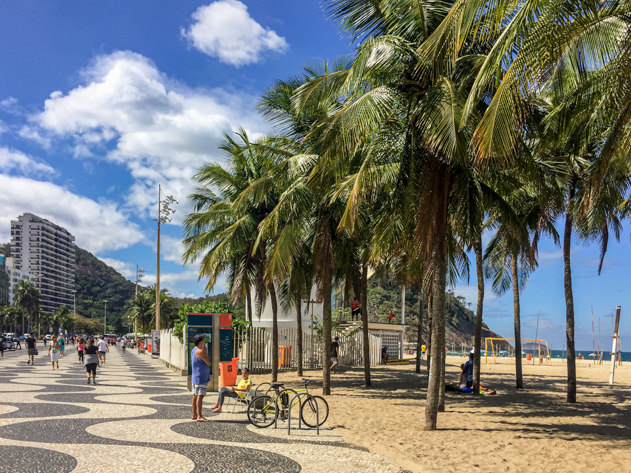
Rio de Janeiro
As one of the largest cities in Brazil, Rio is a lively coastal metropolis with friendly locals, featuring at the same time colonial heritage next to modern architecture, top attractions, idyllic beaches and a delicious food scene.
Ready to discover what to see in this wonderful city nicknamed as Cidade Maravilhosa? These are the top 9 things to do in Rio de Janeiro:
- Take the cable car to Sugarloaf Mountain
- Soak up the views from Tijuca National Park & Christ the Redeemer
- Step back in time around the Old Town
- Explore the bohemian neighborhoods of Lapa and Santa Teresa
- Hit the idyllic beaches
- Discover Lagoa, Jardim Botânico and Gávea
- Enjoy Brazilian football in Maracanã
- Experience the famous Carnival of Rio de Janeiro
- Go on a guided tour to a favela
For more information, check out my ultimate travel guide & map with the 9 things to do in Rio de Janeiro!
Teresópolis
Located at the highest point of the State of Rio de Janeiro and close to Serra dos Órgãos, this mountain city was the favorite summer retreat of Teresa Cristina de Borbón y Dos Sicilias, Empress consort of Pedro II. Teresópolis comes to life on the weekends with the craft fair known as Feirarte taking place in Praça Higino da Silveira, with over 700 stalls. Another popular attraction is Arabotânica, displaying more than 3,000 varieties of orchids.
Map with the best things to do in Angra dos Reis, Ilha Grande and around Rio de Janeiro
In the map below, you will find all the locations mentioned throughout this post. Save it for your ease of reference when planning your trip to Angra dos Reis, Ilha Grande or the surrounding area of Rio de Janeiro!
How did you like this travel guide about Angra dos Reis and Ilha Grande in Brazil? Feel free to leave your questions and comments below.



